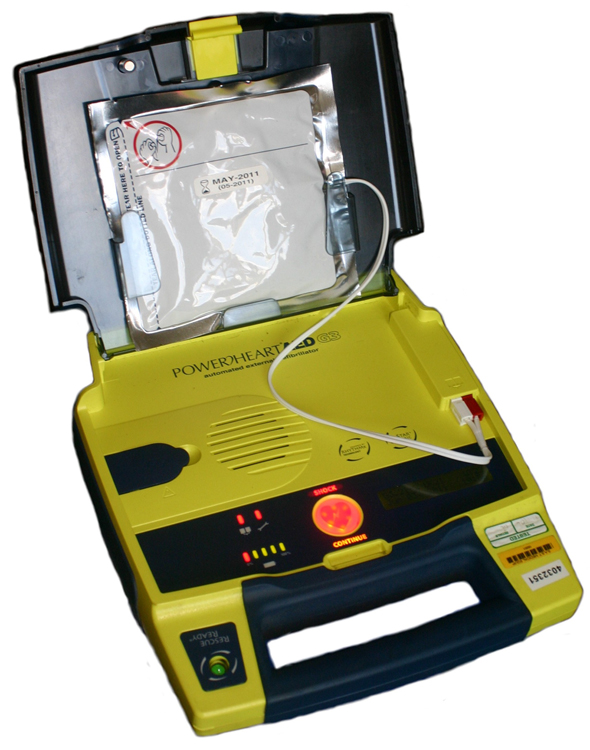| << Chapter < Page | Chapter >> Page > |

A heart defibrillator delivers of energy by discharging a capacitor initially at . What is its capacitance?
Strategy
We are given and , and we are asked to find the capacitance . Of the three expressions in the equation for , the most convenient relationship is
Solution
Solving this expression for and entering the given values yields
Discussion
This is a fairly large, but manageable, capacitance at .
How does the energy contained in a charged capacitor change when a dielectric is inserted, assuming the capacitor is isolated and its charge is constant? Does this imply that work was done?
What happens to the energy stored in a capacitor connected to a battery when a dielectric is inserted? Was work done in the process?
(a) What is the energy stored in the capacitor of a heart defibrillator charged to ? (b) Find the amount of stored charge.
(a)
(b)
In open heart surgery, a much smaller amount of energy will defibrillate the heart. (a) What voltage is applied to the capacitor of a heart defibrillator that stores 40.0 J of energy? (b) Find the amount of stored charge.
(a) 3.16 kV
(b) 25.3 mC
A capacitor is used in conjunction with a motor. How much energy is stored in it when 119 V is applied?
Suppose you have a 9.00 V battery, a capacitor, and a capacitor. (a) Find the charge and energy stored if the capacitors are connected to the battery in series. (b) Do the same for a parallel connection.
(a) ,
(b) ,
A nervous physicist worries that the two metal shelves of his wood frame bookcase might obtain a high voltage if charged by static electricity, perhaps produced by friction. (a) What is the capacitance of the empty shelves if they have area and are 0.200 m apart? (b) What is the voltage between them if opposite charges of magnitude 2.00 nC are placed on them? (c) To show that this voltage poses a small hazard, calculate the energy stored.
(a)
(b)
(c)
Show that for a given dielectric material the maximum energy a parallel plate capacitor can store is directly proportional to the volume of dielectric ( ). Note that the applied voltage is limited by the dielectric strength.
Construct Your Own Problem
Consider a heart defibrillator similar to that discussed in [link] . Construct a problem in which you examine the charge stored in the capacitor of a defibrillator as a function of stored energy. Among the things to be considered are the applied voltage and whether it should vary with energy to be delivered, the range of energies involved, and the capacitance of the defibrillator. You may also wish to consider the much smaller energy needed for defibrillation during open-heart surgery as a variation on this problem.
Unreasonable Results
(a) On a particular day, it takes of electric energy to start a truck’s engine. Calculate the capacitance of a capacitor that could store that amount of energy at 12.0 V. (b) What is unreasonable about this result? (c) Which assumptions are responsible?
(a)
(b) Such a capacitor would be too large to carry with a truck. The size of the capacitor would be enormous.
(c) It is unreasonable to assume that a capacitor can store the amount of energy needed.

Notification Switch
Would you like to follow the 'College physics' conversation and receive update notifications?